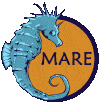
2023 ANNUAL REPORT
20 YEARS OF: EXPLORING, DISCOVERING & PROTECTING OUR OCEANS

Dear Supporters, Partners and Friends of MARE,
I am excited to share our vision with you as we continue our incredible journey of exploration, discovery and impact. This Annual Impact Report commemorates the 20th year of Marine Applied Research and Exploration, as we review where we have been and look ahead to the opportunities and challenges that await us. We have always been driven by the spirit of innovation and the pursuit of knowledge beneath the ocean’s surface. Our mission to explore and protect the marine environment has never been more critical, and our commitment has never been stronger. With your unwavering support, we have achieved many milestones over the years.
This report showcases the incredible work we have performed, from scientific discoveries deepening our understanding of the ocean’s mysteries, to the vital conservation efforts that are helping preserve and restore our precious marine ecosystems. These accomplishments are the result of the dedication, expertise and seaworthiness of our exceptional staff and board of directors, and the vibrant partnerships with like-minded agencies and organizations. As we look to the future, we are filled with a sense of purpose and optimism. Our strategic priorities for the upcoming years include:
- Advancing our technology, enabling us to dive deeper and expand our footprint in deep-sea ecosystems
- Expanding our conservation and restoration initiatives to protect vulnerable marine species and habitats
- Remaining an unbiased, credible organization developing robotic technologies to monitor renewable offshore energy installations
- Expanding our reach – training agencies and universities in countries with the political will to survey and manage their own marine resources
- Engaging and educating the public on the importance of ocean conservation
Our oceans face unprecedented challenges with ocean warming, acidification, and other anthropomorphic impacts. It is more crucial than ever that we continue to document these changes over time. We are the eyes on the seafloor, bringing science to action by working with marine resource managers. With your ongoing support and our collective determination, we can continue to make a lasting impact on the marine world.
With deep gratitude and anticipation,
Dirk Rosen, President

 Congratulations to MARE for 20 years of ocean exploration, research, and expanding our contribution to intelligent ocean management! With our roots in the great success story of ecosystem recovery of California’s Marine Protected Areas, over the last few years, MARE has added capabilities in coral inventorying and recovery as well as offshore renewable energy monitoring.
Congratulations to MARE for 20 years of ocean exploration, research, and expanding our contribution to intelligent ocean management! With our roots in the great success story of ecosystem recovery of California’s Marine Protected Areas, over the last few years, MARE has added capabilities in coral inventorying and recovery as well as offshore renewable energy monitoring.
The Board is so proud of the MARE team’s ingenuity at designing and evolving the surface and deep-sea equipment and video processing/analytics. These are necessary to efficiently view, draw longitudinal insights, and interact with the sea floor to protect a climate-critical and largely unexplored realm of biomass. 2023 was a year of some important capacity-building investments which we feel confident will set us up for expanded impact in 2024. To name a few examples:
- Adding Tom Hourigan, former Chief Scientist for NOAA’s Deep Sea Coral Research and Technology Program, to our Board of Directors with unique perspective as a former client/partner of MARE and a visionary for the future of ocean science and technology
- Outfitting our workboat, the “TomCat” with equipment upgrades needed to perform California surveying missions
- Hiring Salvador Garcia, an experienced sales and marketing operator in both the non-profit and for-profit sectors, to help MARE grow mission-oriented service contracts and grants/donations
We feel prepared to start building a much needed new flagship Remotely Operated Vehicle (ROV) to significantly grow the data collection contracts MARE can take on across the US and international coastlines. Now more than ever, we need everyone’s generous financial support to take a big step forward in ocean research and exploration!
Larissa Pommeraud
Chair, MARE Board of Directors


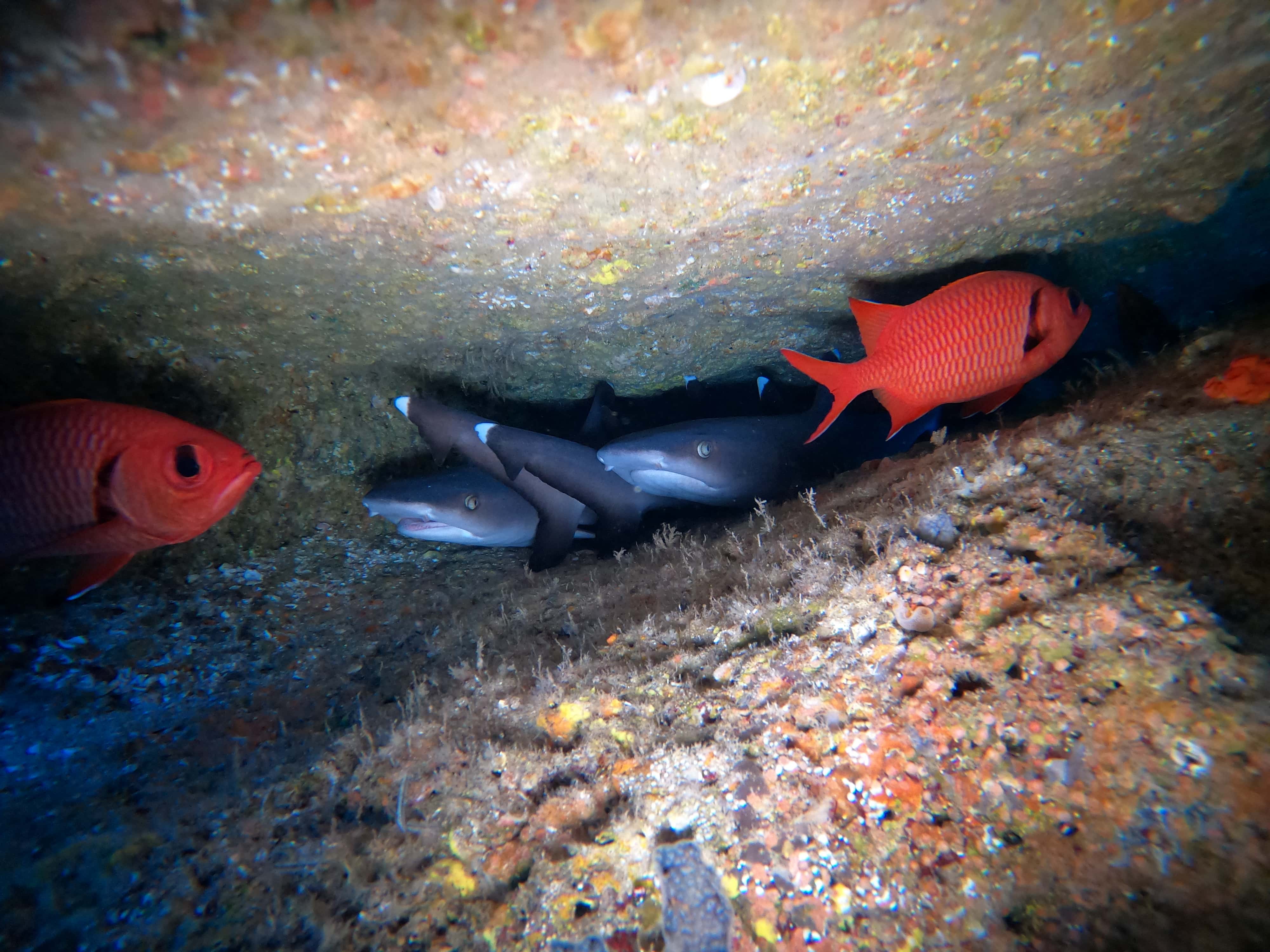 Today, more than 80% of the ocean remains unexplored. Recognizing the lack of visual data available on deep-sea habitats, Marine Applied Research and Exploration (MARE) was founded in 2003 as a nonprofit, 501(c)(3) to ensure future generations have access to vital ocean resources. Our mission at MARE is to explore and document our oceans in support of their conservation and management. We accomplish our mission by building and deploying our fleet of remotely operated systems in deep-sea environments for various underwater applications, informing marine resource management and supporting environmentally conscious scientific research and discovery.
Today, more than 80% of the ocean remains unexplored. Recognizing the lack of visual data available on deep-sea habitats, Marine Applied Research and Exploration (MARE) was founded in 2003 as a nonprofit, 501(c)(3) to ensure future generations have access to vital ocean resources. Our mission at MARE is to explore and document our oceans in support of their conservation and management. We accomplish our mission by building and deploying our fleet of remotely operated systems in deep-sea environments for various underwater applications, informing marine resource management and supporting environmentally conscious scientific research and discovery.
We work collaboratively with state and federal agencies, academic institutions, and other non-governmental organizations. Our research endeavors encompass a broad spectrum— from monitoring marine protected areas and the characterization of habitats within our national marine sanctuaries along the US west coast, to restoring deep-sea coral populations in the Gulf of Mexico and conducting rapid ecosystem assessments in the British Virgin Islands and Hawaii.
We are proud to provide the best scientific collection and analysis services for our partners. Our expertise lies in simplifying intricate scientific data, translating it into clear and succinct written reports, and making sure that our findings are not only accessible, but also actionable.
WHAT WE DO: OUR SURVEYING EQUIPMENT & SERVICES
Our specialized equipment has been tailored to survey deep-sea ecosystems and support operations for scientific research and exploration. Our unmanned remotely operated vehicles (ROVs) and drop-camera systems are outfitted with an array of sensors, cameras, and sampling equipment designed for comprehensive data collection and the retrieval of both biotic and abiotic samples.
Mission planning is the key to our success, and includes equipment selection, sensor integration, and developing new equipment to meet unique operational needs. Once at sea, our systems can be deployed off of various ships for more than 12 hours at a time, during which our ROV pilot and navigator guide the research vessel along pre-planned pathways to meet mission objectives, such as collecting imagery and sensor data, distributing coral propagates, and collecting samples. Post-mission data analysis is performed at our office in Blue Lake, California, where our biologists and data analysts review collected data and produce final data products, reports and documentation.
Fun fact: We fabricate some of our ROV components in house! Our 3D printing capabilities allow us to fabricate custom components such as new sample cutters and collection containers, while also building and replacing older, outdated ROV components.
WHAT WE DO: OUR SURVEYING EQUIPMENT & SERVICES
Our specialized equipment has been tailored to survey deep-sea ecosystems and support operations for scientific research and exploration. Our unmanned remotely operated vehicles (ROVs) and drop-camera systems are outfitted with an array of sensors, cameras, and sampling equipment designed for comprehensive data collection and the retrieval of both biotic and abiotic samples.
Mission planning is the key to our success, and includes equipment selection, sensor integration, and developing new equipment to meet unique operational needs. Once at sea, our systems can be deployed off of various ships for more than 12 hours at a time, during which our ROV pilot and navigator guide the research vessel along pre-planned pathways to meet mission objectives, such as collecting imagery and sensor data, distributing coral propagates, and collecting samples. Post-mission data analysis is performed at our office in Blue Lake, California, where our biologists and data analysts review collected data and produce final data products, reports and documentation.
Fun fact: We fabricate some of our ROV components in house! Our 3D printing capabilities allow us to fabricate custom components such as new sample cutters and collection containers, while also building and replacing older, outdated ROV components.
WHAT WE DO: OUR SURVEYING EQUIPMENT & SERVICES
Our specialized equipment has been tailored to survey deep-sea ecosystems and support operations for scientific research and exploration. Our unmanned remotely operated vehicles (ROVs) and drop-camera systems are outfitted with an array of sensors, cameras, and sampling equipment designed for comprehensive data collection and the retrieval of both biotic and abiotic samples.
Mission planning is the key to our success, and includes equipment selection, sensor integration, and developing new equipment to meet unique operational needs. Once at sea, our systems can be deployed off of various ships for more than 12 hours at a time, during which our ROV pilot and navigator guide the research vessel along pre-planned pathways to meet mission objectives, such as collecting imagery and sensor data, distributing coral propagates, and collecting samples. Post-mission data analysis is performed at our office in Blue Lake, California, where our biologists and data analysts review collected data and produce final data products, reports and documentation.
Fun fact: We fabricate some of our ROV components in house! Our 3D printing capabilities allow us to fabricate custom components such as new sample cutters and collection containers, while also building and replacing older, outdated ROV components.




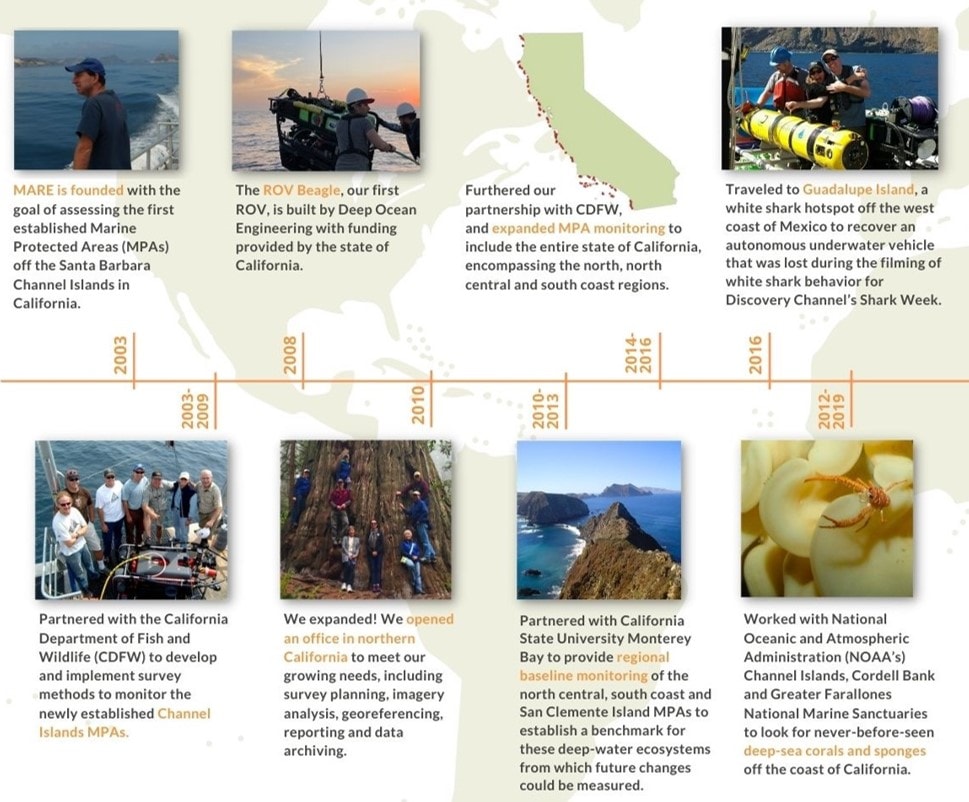


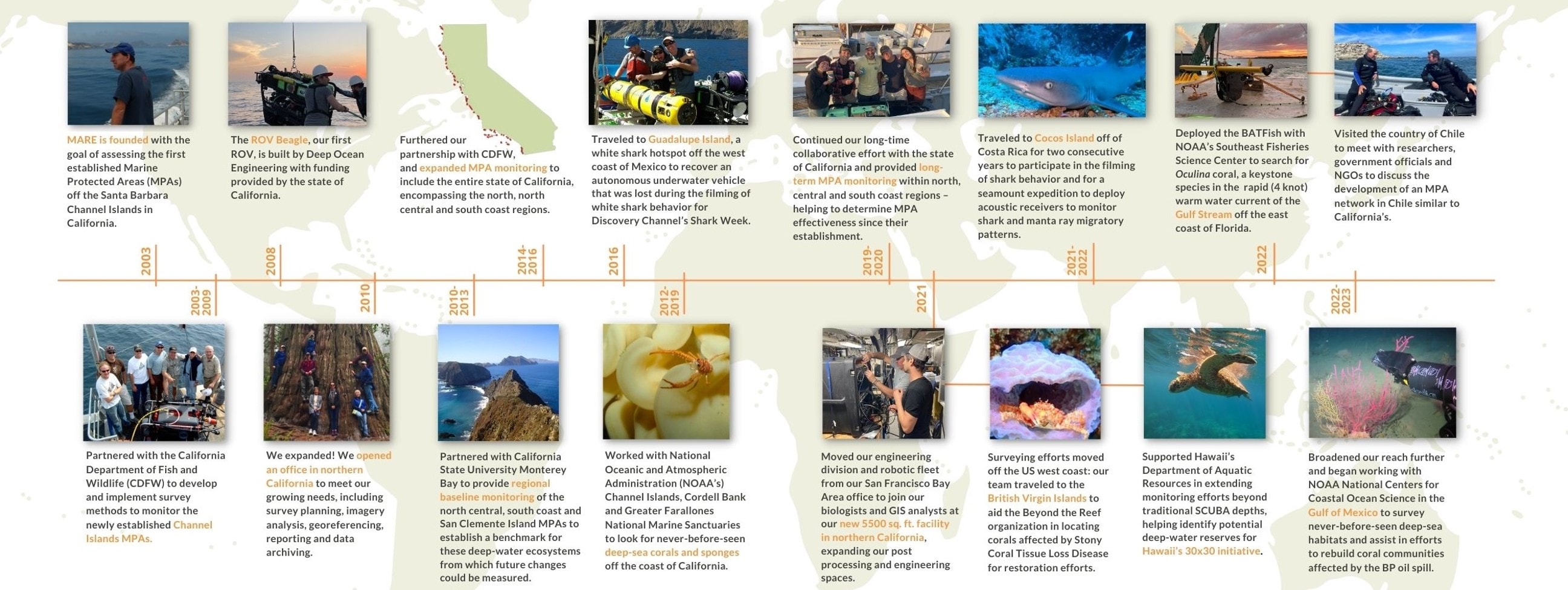

Using our robotic survey fleet to gather information for our research partners, we explore, preform site characterizations, assessments and recovery missions. This past year, we worked with NOAA look at west-coast deep-sea corals and sponges, looked for tar seeps as a part of an archeological mission in the Santa Barbara Channel Islands, and worked with NOAA and partners in the Gulf of Mexico to aid in the collection, propagation and outplanting of coral to restore reefs in the Gulf.
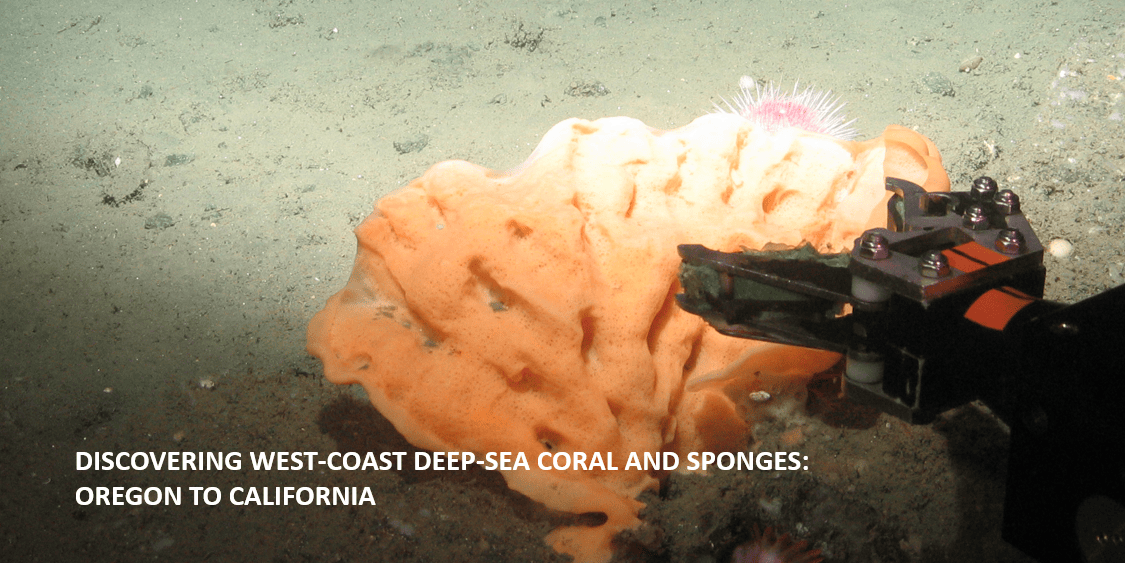
NOAA’s expansive Expanding Pacific Research and Exploration of Submerged Systems (EXPRESS) campaign is a series of cooperative research expeditions focused on looking at deep-sea areas of California, Oregon, and Washington, including the continental shelf and slope. One of the program’s main objectives, and MARE’s role in the project, is to gather data on deep-sea ecosystems to help best direct management of marine life.
This past year, we participated in an expedition to survey locations from central Oregon to northern California aimed at surveying coastal waters to describe seafloor ecosystems within essential fish habitats (EFH). The data gathered will be used by NOAA, the United States Geological Society and the Bureau of Ocean Energy Management to assist in the implementation of offshore wind energy infrastructure and inform management of these areas. MARE deployed the ROV Beagle surveying from September 3rd – 14th 2022 in support of this effort.

Today, the Santa Barbara Channel Islands represent one of the most ecologically significant regions on the US west coast. Known as the “Galapagos of North America,” the area is home to diverse marine and terrestrial ecosystems teeming with over 2,000 species of plants and animals – of which 150 are found nowhere else on earth.
The islands are also the site of the oldest known human remains in North America, and once-exposed land around the islands has been submerged due to post-glacial sea level rise. Evidence of early Native American life may be located in these submerged landscapes, and presents the opportunity to contribute to answering significant archaeological questions, including how and when humans entered the Americas and how they have interacted with the environment since their arrival.
In an effort to locate submerged tar seeps, MARE joined the National Oceanic and Atmospheric Administration, Channel Islands National Marine Sanctuary (CINMS), Natural History Museum of Los Angeles and Scripps Institute of Oceanography on a 10-day expedition from January 1st – 10th, 2023 aboard the R/V Sally Ride. We deployed the ROV Beagle to search for tar seeps, and collected 16 rock and sediment samples on 13 dives within six sites to support this mission. The data gathered on this expedition will help researchers better understand the archaeological, biological, and geological resources in the area.

Using our robotic survey fleet to gather information for our research partners, we explore, preform site characterizations, assessments and recovery missions. This past year, we worked with NOAA look at west-coast deep-sea corals and sponges, looked for tar seeps as a part of an archeological mission in the Santa Barbara Channel Islands, and worked with NOAA and partners in the Gulf of Mexico to aid in the collection, propagation and outplanting of coral to restore reefs in the Gulf.

NOAA’s expansive Expanding Pacific Research and Exploration of Submerged Systems (EXPRESS) campaign is a series of cooperative research expeditions focused on looking at deep-sea areas of California, Oregon, and Washington, including the continental shelf and slope. One of the program’s main objectives, and MARE’s role in the project, is to gather data on deep-sea ecosystems to help best direct management of marine life.
This past year, we participated in an expedition to survey locations from central Oregon to northern California aimed at surveying coastal waters to describe seafloor ecosystems within essential fish habitats (EFH). The data gathered will be used by NOAA, the United States Geological Society and the Bureau of Ocean Energy Management to assist in the implementation of offshore wind energy infrastructure and inform management of these areas. MARE deployed the ROV Beagle surveying from September 3rd – 14th 2022 in support of this effort.

Today, the Santa Barbara Channel Islands represent one of the most ecologically significant regions on the US west coast. Known as the “Galapagos of North America,” the area is home to diverse marine and terrestrial ecosystems teeming with over 2,000 species of plants and animals – of which 150 are found nowhere else on earth.
The islands are also the site of the oldest known human remains in North America, and once-exposed land around the islands has been submerged due to post-glacial sea level rise. Evidence of early Native American life may be located in these submerged landscapes, and presents the opportunity to contribute to answering significant archaeological questions, including how and when humans entered the Americas and how they have interacted with the environment since their arrival.
In an effort to locate submerged tar seeps, MARE joined the National Oceanic and Atmospheric Administration, Channel Islands National Marine Sanctuary (CINMS), Natural History Museum of Los Angeles and Scripps Institute of Oceanography on a 10-day expedition from January 1st – 10th, 2023 aboard the R/V Sally Ride. We deployed the ROV Beagle to search for tar seeps, and collected 16 rock and sediment samples on 13 dives within six sites to support this mission. The data gathered on this expedition will help researchers better understand the archaeological, biological, and geological resources in the area.
DEEP-SEA CORAL RECOVERY: THE GULF OF MEXICO
Spanning the coastlines of Texas and Louisiana lies a hidden paradise, Flower Garden Banks National Marine Sanctuary (FGBNMS). The northernmost set of coral reefs in the continental US, this secret coral “garden” in the Gulf of Mexico boasts 17 distinct reefs that include more than 20 species of stony corals, including the boulder-sized brain and star corals for which these reefs are famous.
Flower Garden Banks is just one of many mesophotic coral reefs throughout the Gulf of Mexico. While the sanctuary remains free of visible damage to date, the Gulf’s coastline and associated coral reefs were adversely affected by the 2010 Deepwater Horizon oil spill, which leaked 134 million gallons of oil into the Gulf. In one of the first large-scale deep-sea coral restoration efforts, NOAA and its partners have been working towards restoring the affected reefs, with funding from BP’s damages and restoration settlement.
Coral collection, propagation and outplanting are key to reestablishing these damaged mesophotic reefs and rebuilding the benthic communities which rely on them. We have worked with NOAA since 2022 to aid in the collection of deep-sea corals in the Gulf of Mexico to understand their genetic diversity, assess coral growth and reproduction in the lab, and test the survivorship of outplanted corals.
Within the last year, ROV Beagle collected coral samples during two separate expeditions in this series. The first expedition was on the R/V Point Sur from May 13th – 26th, 2023, where we collected 79 coral samples over 24 dives. On this cruise, we also outplanted live coral cuttings on artificial substrates to the seafloor to test survivorship using this approach for outplanting. The second expedition took place on the R/V Pelican from June 19th – 30th, 2023, and resulted in the collection of 111 samples over 20 dives. Video footage taken during these expeditions was processed by MARE biologists to characterize finfish and invertebrate populations to help NOAA better understand these benthic communities.
DEEP-SEA CORAL RECOVERY: THE GULF OF MEXICO
Spanning the coastlines of Texas and Louisiana lies a hidden paradise, Flower Garden Banks National Marine Sanctuary (FGBNMS). The northernmost set of coral reefs in the continental US, this secret coral “garden” in the Gulf of Mexico boasts 17 distinct reefs that include more than 20 species of stony corals, including the boulder-sized brain and star corals for which these reefs are famous.
Flower Garden Banks is just one of many mesophotic coral reefs throughout the Gulf of Mexico. While the sanctuary remains free of visible damage to date, the Gulf’s coastline and associated coral reefs were adversely affected by the 2010 Deepwater Horizon oil spill, which leaked 134 million gallons of oil into the Gulf. In one of the first large-scale deep-sea coral restoration efforts, NOAA and its partners have been working towards restoring the affected reefs, with funding from BP’s damages and restoration settlement.
Coral collection, propagation and outplanting are key to reestablishing these damaged mesophotic reefs and rebuilding the benthic communities which rely on them. We have worked with NOAA since 2022 to aid in the collection of deep-sea corals in the Gulf of Mexico to understand their genetic diversity, assess coral growth and reproduction in the lab, and test the survivorship of outplanted corals.
Within the last year, ROV Beagle collected coral samples during two separate expeditions in this series. The first expedition was on the R/V Point Sur from May 13th – 26th, 2023, where we collected 79 coral samples over 24 dives. On this cruise, we also outplanted live coral cuttings on artificial substrates to the seafloor to test survivorship using this approach for outplanting. The second expedition took place on the R/V Pelican from June 19th – 30th, 2023, and resulted in the collection of 111 samples over 20 dives. Video footage taken during these expeditions was processed by MARE biologists to characterize finfish and invertebrate populations to help NOAA better understand these benthic communities.

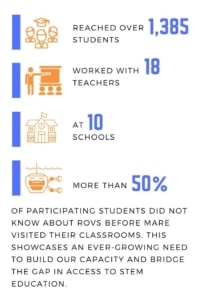 MARE’s Education Program was launched in 2020 with our Deep-Sea Engineering Challenge. The Education Program continues to evolve and flourish, while expanding its curriculum and reach. Our Education Program serves grades 6-12 and offers science lectures, guest speakers and interactive learning challenges to introduce students and educators to engineering, ocean conservation, and deep-sea ecology. The program’s interactive lab activities allow students to gain hands-on experience in critical thinking, data collection and interpretation, and engineering design.
MARE’s Education Program was launched in 2020 with our Deep-Sea Engineering Challenge. The Education Program continues to evolve and flourish, while expanding its curriculum and reach. Our Education Program serves grades 6-12 and offers science lectures, guest speakers and interactive learning challenges to introduce students and educators to engineering, ocean conservation, and deep-sea ecology. The program’s interactive lab activities allow students to gain hands-on experience in critical thinking, data collection and interpretation, and engineering design.
As a STEM organization, we are uniquely positioned to provide an accessible pathway for California’s Bay Area students to learn about careers in marine technology, engineering, and conservation. We are seeing a positive impact with nearly nine times the number of youth participating in 2023 since the program began. Through the cultivation of fresh outreach partnerships and the development of innovative curricula, we are eager to ignite inspiration and empower future ocean stewards, not only this year, but in the years to come!
STATMENT OF ACTIVITIES
JULY 1, 2022 – JUNE 30, 2023

OCEAN CHAMPIONS: PARTNERS & DONORS
JULY 1, 2022 – JUNE 30, 2023
$50,000 – $75,000
Anonymous
Paul M. Angell Family Foundation
Danish Exploration Fund
Peter J. Davis Family Foundation
Schmidt Family Foundation
The Robert & Lisa Margolis Family Foundation
$10,000 – $25,000
Emmet Family Foundation
Jon Graham & Elizabeth Ulmer
Louderback Family Foundation
Schmidt Marine Technology Partners
The Dean & Ann Witter Fund for Charitable Giving
$1,000 – $5,000
Anonymous
Daniel Braithwaite
Christopher Cherney
Kerry Davidson & Dan Fitzgerald
Ferguson Family Charitable Fund
Jon Glassman
Larry L. Hillblom Foundation
Hobson Family Foundation
Reiko Lane in memory of Robert Lane
Jeff & Mia Ludlow
Brain & Heidi Miller
Larissa Pommeraud
Shuba Raghavan & Ravindran Kannan
Dirk Rosen
Lawrence Rosen
Martin & Joan Rosen
Michael Joseph Shearn II Charitable Giving Fund
Sidney Stern Memorial Trust
$100 – $500
Anonymous
James & Rebecca Austin
Donald Barthelmess Jr
Doug Canepa
William Davidge
Genie Praetzel & Boyd Davis
Liz Frome
Marc Gordan
James & Jane Griffin
John Griffin & Lynn Richmond
Tanis & Seth Hammond
Matthias Horn
Shelly Hummel
Will Jaeckle
Bruce Keene
Marc Lopata
Tim Nardell
Gloria Oakes
Matt Praetzel
Ciji Rich
Ann Rich
Lorenzo Kampel & Ann Rosenberg
Shirley Rosseau
Glenn & Liliko Sakima
James Sano
Ruth Shapiro & Michael Gallagher
Jerry Shapiro
Dirk Van Waart
Pamela Wayne
Shelly Willard
Valerie & Howard Wynn
Grace Young
STATMENT OF ACTIVITIES
JULY 1, 2022 – JUNE 30, 2023

OCEAN CHAMPIONS: PARTNERS & DONORS
JULY 1, 2022 – JUNE 30, 2023
$50,000 – $75,000
Anonymous
Paul M. Angell Family Foundation
Danish Exploration Fund
Peter J. Davis Family Foundation
Schmidt Family Foundation
The Robert & Lisa Margolis Family Foundation
$10,000 – $25,000
Emmet Family Foundation
Jon Graham & Elizabeth Ulmer
Louderback Family Foundation
Schmidt Marine Technology Partners
The Dean & Ann Witter Fund for Charitable Giving
$1,000 – $5,000
Anonymous
Daniel Braithwaite
Christopher Cherney
Kerry Davidson & Dan Fitzgerald
Ferguson Family Charitable Fund
Jon Glassman
Larry L. Hillblom Foundation
Hobson Family Foundation
Reiko Lane in memory of Robert Lane
Jeff & Mia Ludlow
Brain & Heidi Miller
Larissa Pommeraud
Shuba Raghavan & Ravindran Kannan
Dirk Rosen
Lawrence Rosen
Martin & Joan Rosen
Michael Joseph Shearn II Charitable Giving Fund
Sidney Stern Memorial Trust
$100 – $500
Anonymous
James & Rebecca Austin
Donald Barthelmess Jr
Doug Canepa
William Davidge
Genie Praetzel & Boyd Davis
Liz Frome
Marc Gordan
James & Jane Griffin
John Griffin & Lynn Richmond
Tanis & Seth Hammond
Matthias Horn
Shelly Hummel
Will Jaeckle
Bruce Keene
Marc Lopata
Tim Nardell
Gloria Oakes
Matt Praetzel
Ciji Rich
Ann Rich
Lorenzo Kampel & Ann Rosenberg
Shirley Rosseau
Glenn & Liliko Sakima
James Sano
Ruth Shapiro & Michael Gallagher
Jerry Shapiro
Dirk Van Waart
Pamela Wayne
Shelly Willard
Valerie & Howard Wynn
Grace Young
